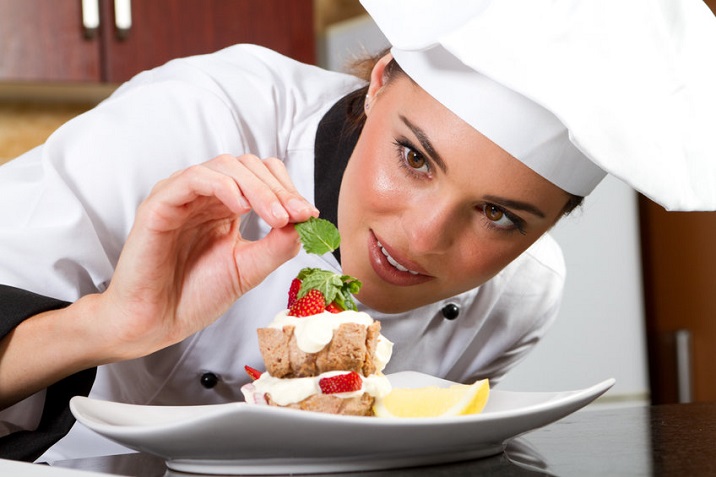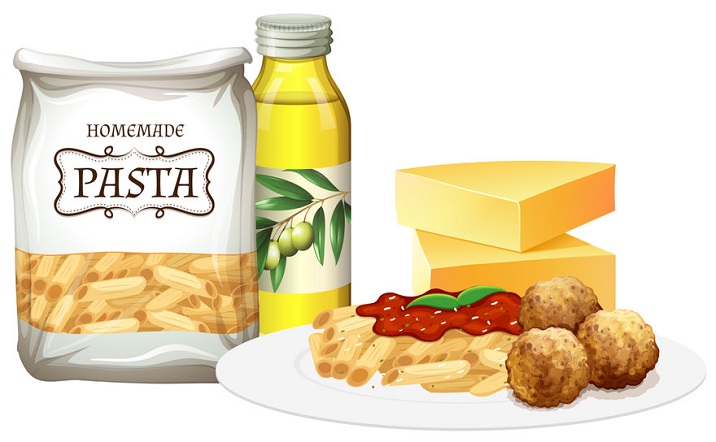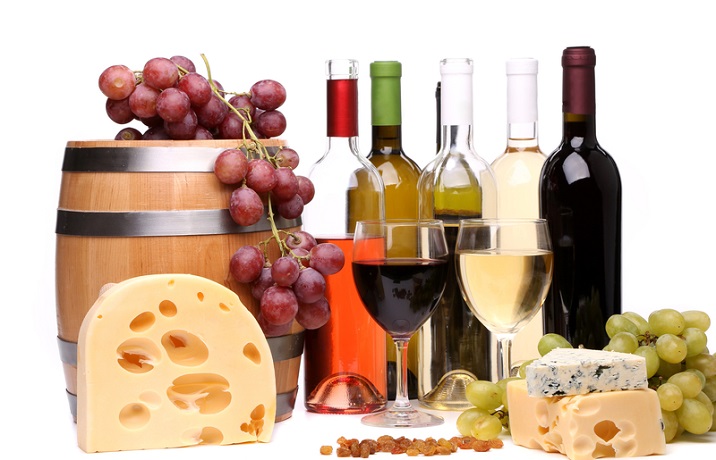
- F & B Services – Home
- F & B Services - Basics
- F & B Services - Cycle
- F & B Services – Terminology
- F & B Services – Organization
- F & B Services – Types Of Service
- F & B Services – Outlets
- F & B Services – Operations
- Analysis & Decision Making
- F & B Services – Menu Preparation
- F & B Services – Ethnic Food Menus
- F & B Services – Menu Courses
- F & B Services – Beverages
- F & B Services – Equipment
- F & B Services – Use Of Cutlery
- F & B Services – Use Of Linen
- F & B Services – Pantry Equipment
- Cleaning & Maintenance
- F & B Services – Food Garnishing
- F & B Services – Beverage Service
- F & B Services – Preparation
- F & B Services – Preparing The Table
- F & B Services – SOPs
- F & B Services – Hygiene & Safety
Food & Beverage Services - Food Garnishing
The guests experience of food and beverage starts when the serving staff brings beautifully garnished food with the appropriate accompaniments on their table. The service staff turns a guiding hand to the guests in suggesting which accompaniment will go well with the main food the guest is interested in having.
There are numerous interesting pairs of foods with their garnishes or accompaniments. Let us see in detail about garnishing, food accompaniments, and some typical food-garnishing paired with accompaniments.
What is Garnishing?
It is the way of decorating the food or beverage so that it is aesthetically appealing for the guests/customers. It works on the plate. Garnishing also harmonizes color, flavor, and taste of the main dish.
Chopped herbs or small twigs of herbs, leafy vegetables, twirls of carrots or tomatoes, swirls of fresh cream, fruit glaze, chopped nuts, seedless berries, and lemon zest or slices are used for garnishing.

Desserts are garnished with dried fruits, fresh fruit zests, glazes, roasted or candied nuts, frostings, chocolate curls, chocolate coated buts, or small pieces of sugar arts.
Drinks like cocktails and mocktails are garnished using fruit pieces and zests, mint leaves, and castor sugar. Milk based drinks are garnished mostly with fruit pieces, cherries, chocolates, or nuts.
Dos and Donts of Food Garnishing
The following are some important Dos and Donts to be understood in food garnishing −
- Place it where it seems just perfect.
- Contrast color schemes work best for garnishing.
- Do not overdo garnishing; this overshadows the main food.
- Do not reuse the garnish.
- Avoid being too elaborate.
What is Accompaniment?
There are dishes that come along with accompaniments. These accompaniments complement the main food and enrich its taste. It provides an aesthetic value to the main dish. The accompanying food or beverage itself can have a garnish of its own. An accompaniment can be inside the main dish or in a separate bowl.
The following are a few different types of accompaniments −
- Sauces and Dips
- Pickles
- Dressings
- Chips and Wedges
- Salads
- Gravies
- Beverages such as soft drinks or wines
- Breads

For example, grilled Hake fish served with potato chips and Pizza served with garlic bread, cheese dip, and a carbonated beverage.
Popular Food Items with their Accompaniments
The following are a few popular food items with their garnishing and accompaniments −
| Food/Dish | Garnish | Accompaniment |
|---|---|---|
| Soups | Chopped Cilantro/Fresh leaf of Basil/Croutons/Cream swirls | Salads/Breads/Crispy starters |
| Bouillabaisse | Chopped herbs | Country bread slices spread with Rouille, a spicy mayonnaise. |
| Farineaux Spaghetti | Fresh basil leaves | Grated cheese, pepper powder, and Neapolitan tomato sauce. |
| Veg/Non-veg burger | Not essential | Potato/ Sweet potato chips, aerated drinks or ale. |
| Indian Snacks Idli, Vada, and Dhokla | Chhonk of clarified butter with mustard and cumin seeds, and curry leaves. | Coconut-Cilantro-Green Chili Chutney. Idli and Vada are often accompanied with lentil curry called Sambar. |
| Indian Onion or Chili Fritters (Pakoras) | Not essential | Tomato sauce or hot and sour chutney. |
| Mutton/Chicken/ Veg Biryani | Chopped coriander and caramelized onion stripes. | Liquid gravy with lemon wedges and onion-tomato-cucumber salad in curds. |
| Indian one dish meal Pao-Bhaji (Pao=bread, Bhaji=Spicy Stew) | Pao is garnished with butter and Bhaji with chopped cilantro and butter. | Onion-Tomato-Cilantro salad with lemon wedges and mango pickle. |
| Barbequed/Braiied Beef/Game Meat | Herbs | Sauces |
| Roast Beef | Herbs, Butter | Horse Radish sauce |
| Fruit Salad | Castor Sugar | Yogurt |
| Irish Stew | Herbs | Worcestershire sauce and Pickled red cabbage. |
| Poulet Grille Americain (American Grilled Chicken) | Herbs in butter. | Addition of grilled dices of tomato, mushroom, capsicum, and potato. |
| Sage and Onion Stuffed Goose | Pieces or Stripes of salad vegetables. | Apple sauce and roast gravy. |
| Fromage Assorti (Assorted Cheese) | Castor sugar for crme cheese. | Celery, Radish, Water Crest, and Cracker Biscuits. |
| Veg/Non-veg Stew | Chopped fresh coriander | Steamed Rice or Bread |
| Ice Creams | Vanilla/Chocolate/Raspberry/Strawberry Sauce, chopped nuts, Colorful candies, Rose Petals | Waffle sticks or stripes. |
Cheese and Wine Pairings
There are no stringent rules for which wine goes well with which cheese but one must observe the following guidelines while pairing wines with cheese −
- Select wine and cheese originating from the same region.
- Dessert wines accompanying the desserts must be sweeter than the dessert itself.
- Cheeses go well with wines of contrast taste.
| Wine | Cheese |
|---|---|
| Champagne Brut, Extra Brut (Dry) | Brie, Camembert |
| Champagne Sec, Demi-Sec, Doux (Sweeter) | Cheddar, Gouda, and Parmesan |
| Shiraz | Cambozola |
| Red Bordeaux | Cheddar |
| Chenin Blanc | Blue, Camembert |
| Pinot Blanc | Baby Swiss, Brie, Camembert, and Feta |
| Cabernet Sauvignon | Blue, Cheddar, Gorgonzola, Gouda, and Parmesan |
| Cabernet Franc | Blue, Brie, Cheddar, Gorgonzola, and Goat Cheese |
| Chianti | Mozzarella and Parmesan |
| Port (hails from Portugal and sweeter than other wines) | Blue and Gorgonzola |
Chocolate and Wine Pairings
Lighter chocolates contain more milk based-products and less chocolate. Chocolates with light and elegant tastes are paired best with light-bodied wines. The ones with more bitter taste are paired with intense flavored full-bodied wines.

Standardized Recipes
A critical standardized recipe is one that, has been tried, adapted, and retried several times for use by a given food service operation and has been found to yield the same good results under same procedures, equipment, and quantity and quality of ingredients.
Generally, popular menu items are developed using standard recipes, ingredients, and presentation.
Benefits of Standardized Recipes
A standardized recipe can bring in the following benefits −
- Consistency in food quality.
- Consistency in nutrients per unit serving.
- Increase in customer satisfaction.
- Control on cost of food.
- Prediction of accurate yield.
- Reduction in food leftover and record keeping.
- Increase in the confidence of employees.
Components of a Standardized recipe
A typical standardized recipe is composed of the following description −
Recipe name/title − It is the name that describes the recipe in brief.
Recipe section − It is the section that the recipe should be classified under (grains, starters, desserts, etc.)
Ingredients − Types (fresh/canned/cooked/uncooked/ground, etc.)
Weight and measures of ingredients
Method − This is a set of instructions to prepare a particular recipe. A method includes guidelines for steps such as mixing, selecting pans, and setting the right cooking temperature.
Time − This includes preparation time, cooking time, and serving time.
Serving size − It is the portion of food to be served.
Critical Control Points (CCP) − They are control measures taken to avoid food safety hazards. Every CCP includes control of time, preparation, and cooking temperature.
Critical Standardized Recipes
Predicting the total yield for a particular number of customers and calculating weights of ingredients accordingly is important in standardized recipes.
For recipe to be prepared for new lot of customers, the total yield changes. The new yield can be calculated in the following two steps −
Step 1 − Calculate conversion factor as −
Conversion Factor = New Yield / Old Yield
Step 2 − Multiply the measure of each ingredient by the conversion factor to obtain the new yield −
New Yield = Old ingredient quantity x Conversion factor